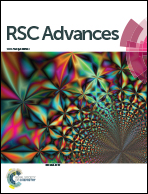An ab initio study on the electronic and magnetic properties of MgO with intrinsic defects
Abstract
Using ab initio calculations based on density functional theory with PBEsol/PBEsol + U method, the electronic and magnetic properties of undoped MgO are investigated. Calculated results demonstrate that both neutral  and singly charged Mg vacancy
and singly charged Mg vacancy  can introduce magnetic moment to MgO, and the magnetic moment mainly arises from the spin polarization of the partially occupied 2p orbitals of the nearest O atoms. In combination of group theory and molecular orbital theory, it is found that the magnetic moment is originating from the partially occupied eg− orbital. Results also demonstrate that closed shell Mg vacancy
can introduce magnetic moment to MgO, and the magnetic moment mainly arises from the spin polarization of the partially occupied 2p orbitals of the nearest O atoms. In combination of group theory and molecular orbital theory, it is found that the magnetic moment is originating from the partially occupied eg− orbital. Results also demonstrate that closed shell Mg vacancy  and all of
and all of  ,
,  and
and  cannot lead to magnetic moment in MgO, but
cannot lead to magnetic moment in MgO, but  and
and  will change the insulating behavior into n-type conductivity. In MgO with double Mg vacancies, the defects formation energies suggest that two Mg vacancies prefer the next nearest sites to other configurations. In addition, the magnetic coupling induced by two Mg vacancies is mainly due to the p–p hybridization interaction of O atoms. However, the magnetic moment will be drastically reduced or even completely suppressed within PBEsol + U method, and the total density of states reveal that the system with Mg vacancy displays a p-type conductivity character.
will change the insulating behavior into n-type conductivity. In MgO with double Mg vacancies, the defects formation energies suggest that two Mg vacancies prefer the next nearest sites to other configurations. In addition, the magnetic coupling induced by two Mg vacancies is mainly due to the p–p hybridization interaction of O atoms. However, the magnetic moment will be drastically reduced or even completely suppressed within PBEsol + U method, and the total density of states reveal that the system with Mg vacancy displays a p-type conductivity character.


 Please wait while we load your content...
Please wait while we load your content...